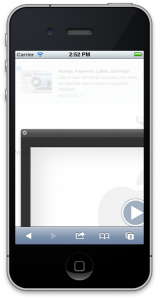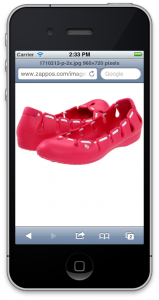The trouble with light boxes
May 17th, 2012These days (actually more like for the last five years), when you’re designing a site and have preview thumbnails/photos/screenshots of things, you’re probably using one of the millions of light box scripts/plugins out there. Light boxes are the new funny mouse trails.
Chances are you’re completely breaking your sites for mobile users.
If you don’t have a mobile site
In case you’re serving the same site to both desktop and mobile users (which for most sites is preferable anyway, Apple does it!), use a light box script that calculates the “center of screen” position once when you open the image. Make sure the button to close the zoomed-in image is always visible.
Don’t use any scripts that recalculate the position on scrolling or window size changes. Users on mobile devices will hate you for it. A lot.
In general, don’t try to be too clever.
If you have a mobile site
The trick is to link to the bigger version of the image directly.
Why? First off, it loads really fast, as only the image has to be transferred and you won’t need any JavaScript at all. Secondly, the user can use gestures to zoom in on the image and by default it’s shown as full-screen as possible. Afterwards the user can just hit the back button to go back to your main content. There’s no need to implement fancy zoom scripts and complicated UI controls; the user already knows how to zoom images on the device.
Zappos does it, so you can too.
Addtionally, don’t bother having “retina” versions and “normal” versions. Just provide one single hi-res image.
It’s better to spend your time on seeing what level of JPEG compression works best for the image you use (if you’re curious, Zappos uses 92 for this particular image—one way to find out is to use identify -verbose filename.jpg | grep "Quality" if you have ImageMagick installed).
Plus, have good toolchain to minimize your images without quality loss, I can’t recommend the ImageOptim tool highly enough for that. I was able to shave off a cool 6% of the file size of the image used on Zappos. Your users will love you for the faster loading images!






